NCKU responds to southern Taiwan earthquake
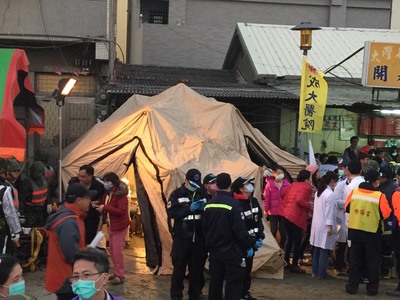
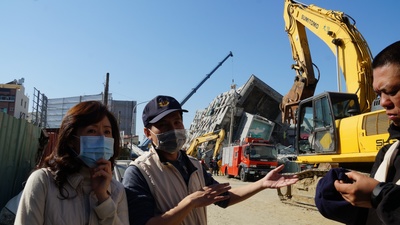
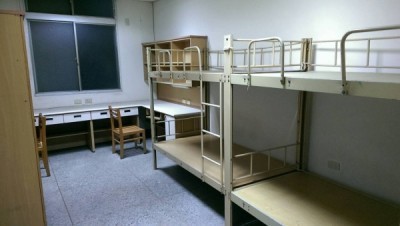
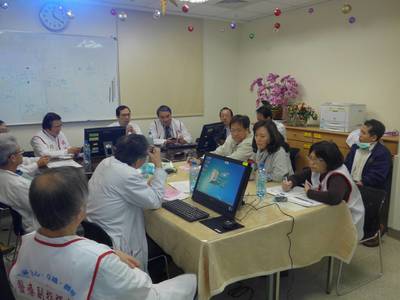
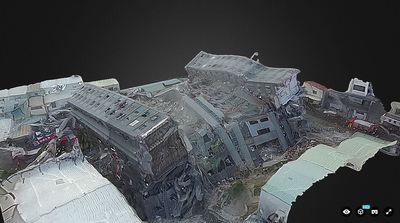
Tainan, Taiwan, February 8, 2016
A magnitude 6.4 earthquake rattled the nation at 3:57am February 6, demolishing buildings in Tainan City and trapping dozens in the rubble. National Cheng Kung University (NCKU) mobilized a response effort and undertook a range of relief activities.
In an effort to help those affected by the earthquake, students, faculty, staff, and members in the NCKU community had come together.
NCKU Hospital set up a medical station on February 6 to provide medical service in support of search-and-rescue teams at the Weiguan Jinlong disaster site.
A crisis management team was formed accordingly under the leadership of President Huey-Jen Jenny Su.
Campus Security Report Center sent out a crew to petrol the campus and made sure students who were staying at the dorms were safe.
President Su also made contact with the Tainan City Government to voluntarily provide all the necessary resources from the university.
Doctors and nurses from NCKU Hospital were in the disaster site from day 1 to set up emergency station, and an effective dispatch system to provide relief, support and assistance.
A great number of health-care professionals volunteer their services to help victims in the disaster sites.
Vice Dean of the College of Planning and Design Prof. George Yao who has been closely collaborating with National Center for Research on Earthquake Engineering led a team to investigate the structure of the collapsed buildings and collected first-hand information after the survey.
A team from NCKU’s Department of Geomatics Laboratory of Cyber-city used collated images and movie clips to build a three-dimensional model of the Weiguan Jinlong complex.
Access to the model has been linked to the National Science and Technology Center for Disaster Reduction to aid in existing search and rescue by means of mapping the building's collapse.
This would present valuable information and analytics to ground personnel on the building's layout before and after the quake for them to locate possible survivors.
With 3D imaging, the model can be rotated with options for zooming in and out of the building image.
In addition, a total of 48 dorm rooms were ready to be served as temporary shelters for the survivors and their family.
Enditem/
A magnitude 6.4 earthquake rattled the nation at 3:57am February 6, demolishing buildings in Tainan City and trapping dozens in the rubble. National Cheng Kung University (NCKU) mobilized a response effort and undertook a range of relief activities.
In an effort to help those affected by the earthquake, students, faculty, staff, and members in the NCKU community had come together.
NCKU Hospital set up a medical station on February 6 to provide medical service in support of search-and-rescue teams at the Weiguan Jinlong disaster site.
A crisis management team was formed accordingly under the leadership of President Huey-Jen Jenny Su.
Campus Security Report Center sent out a crew to petrol the campus and made sure students who were staying at the dorms were safe.
President Su also made contact with the Tainan City Government to voluntarily provide all the necessary resources from the university.
Doctors and nurses from NCKU Hospital were in the disaster site from day 1 to set up emergency station, and an effective dispatch system to provide relief, support and assistance.
A great number of health-care professionals volunteer their services to help victims in the disaster sites.
Vice Dean of the College of Planning and Design Prof. George Yao who has been closely collaborating with National Center for Research on Earthquake Engineering led a team to investigate the structure of the collapsed buildings and collected first-hand information after the survey.
A team from NCKU’s Department of Geomatics Laboratory of Cyber-city used collated images and movie clips to build a three-dimensional model of the Weiguan Jinlong complex.
Access to the model has been linked to the National Science and Technology Center for Disaster Reduction to aid in existing search and rescue by means of mapping the building's collapse.
This would present valuable information and analytics to ground personnel on the building's layout before and after the quake for them to locate possible survivors.
With 3D imaging, the model can be rotated with options for zooming in and out of the building image.
In addition, a total of 48 dorm rooms were ready to be served as temporary shelters for the survivors and their family.
Enditem/
Provider:
NCKU News
Date:
2016/02/08



